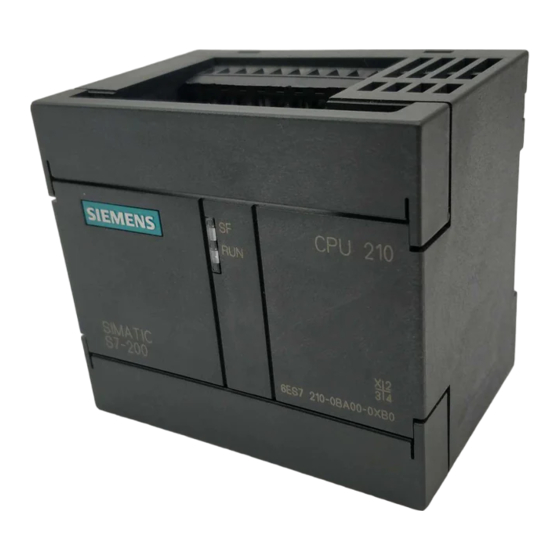
Siemens Simatic S7-200 CPU 210 Manuals
Manuals and User Guides for Siemens Simatic S7-200 CPU 210. We have 1 Siemens Simatic S7-200 CPU 210 manual available for free PDF download: System Manual
Siemens Simatic S7-200 CPU 210 System Manual (140 pages)
Brand: Siemens
|
Category: Controller
|
Size: 0.78 MB
Table of Contents
Advertisement
Advertisement
